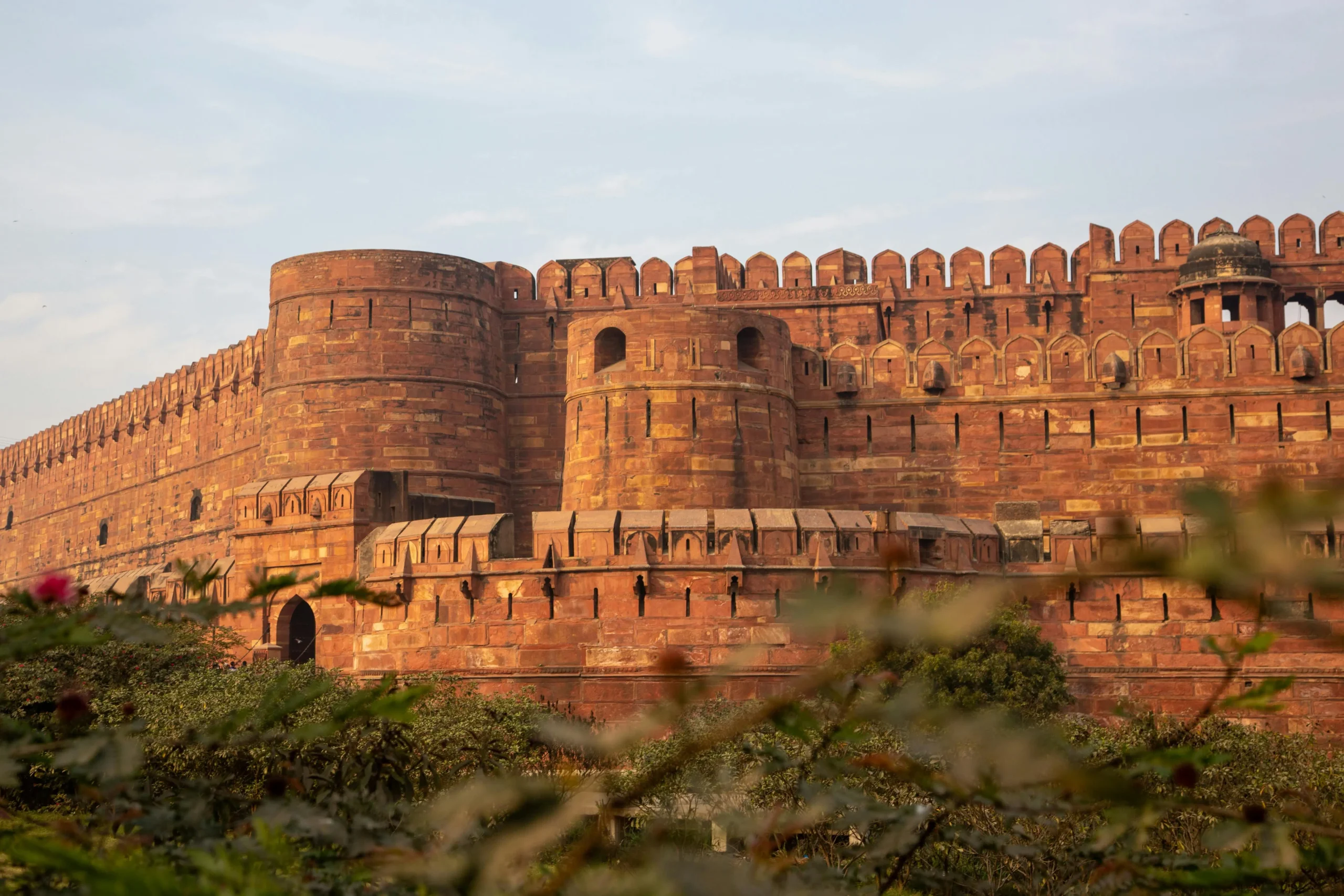
- 1. *Morning:* Begin your journey early in the morning with a comfortable drive from Delhi to Agra, enjoying the scenic views along the way. Arrive in Agra and head straight to the iconic *Taj Mahal*. Marvel at this UNESCO World Heritage Site, a symbol of love and architectural beauty, as you explore its intricate marble carvings and tranquil gardens.
2. *Mid-Morning:* After soaking in the splendor of the Taj Mahal, visit the *Agra Fort*, another UNESCO World Heritage Site. Discover the rich history and stunning Mughal architecture of this grand fort, which served as a royal residence and military base.
3. *Lunch:* Take a break and savor a delicious lunch at a local restaurant, where you can enjoy traditional Mughlai cuisine, known for its rich flavors and aromatic spices.
4. *Afternoon:* Post-lunch, visit the serene *Mehtab Bagh*, the garden complex located opposite the Taj Mahal, across the Yamuna River. This spot offers a unique perspective of the Taj, perfect for photography enthusiasts.
5. *Shopping:* Spend some time exploring Agra’s local markets, famous for their exquisite marble inlay work, handicrafts, and traditional textiles. Don’t forget to pick up a souvenir to remember your visit.
6. *Evening:* Before heading back, make a quick stop at the beautiful *Tomb of Itimad-ud-Daulah*, often referred to as the “Baby Taj.” This smaller yet stunning marble mausoleum is a precursor to the Taj Mahal and showcases exquisite craftsmanship.
*Agra Fort:*

Agra Red Fort: A Majestic Mughal Legacy
Explore the grandeur of the Agra Red Fort, a UNESCO World Heritage site and a testament to Mughal brilliance. Built by Emperor Akbar in 1573, this stunning red sandstone fortress stands as a symbol of power and elegance. Located just minutes away from the Taj Mahal, the fort features exquisite structures like the Diwan-i-Aam, Diwan-i-Khas, and the iconic Sheesh Mahal. Immerse yourself in centuries of history, where the architectural fusion of Islamic, Persian, and Indian styles brings the Mughal era to life. Agra Red Fort, also known as Lal Qila, is a massive 16th-century fortress located in Agra, India, about 2.5 km from the iconic Taj Mahal. Built primarily out of red sandstone by the Mughal emperor Akbar in 1573, it served as the main residence of the Mughal rulers until 1638. The fort is a UNESCO World Heritage site, symbolizing the grandeur of Mughal architecture.

Sikandra: The Majestic Tomb of Akbar the Great
Located just outside Agra, Sikandra is home to the grand mausoleum of Emperor Akbar, one of the most powerful Mughal rulers. This impressive tomb, built with a blend of red sandstone and white marble, reflects Akbar’s vision of a peaceful, multi-religious empire.
Sikandra Fort is located in the western periphery of Fatehpur Sikri at a distance of about 10 kms from the city center. Sikandra was last resting place of the Mughal emperor Akbar. Akbar was the greatest of the Mughal emperors and one of the most secular minded royalties of his time. He was the heir to a long tradition of oriental refinement, a great patron of the arts, literature, philosophy and science. A visit to Akbar’s monument opens before one, the completeness of Akbar’s personality as completely as the Taj Mahal does of Mumtaz Mahal’s . Akbar himself planned his own tomb and selected a suitable site for it. To construct a tomb in one’s lifetime was a Tartary custom, which the Mughals followed religiously. Akbar’s son Jahangir completed the construction of this pyramidal tomb in 1613. The intricate architecture, adorned with stunning carvings and inscriptions, showcases a harmonious fusion of Hindu, Islamic, and Jain styles. Surrounded by lush gardens and serene pathways, Sikandra offers visitors a glimpse into the legacy of one of India’s greatest emperors.
